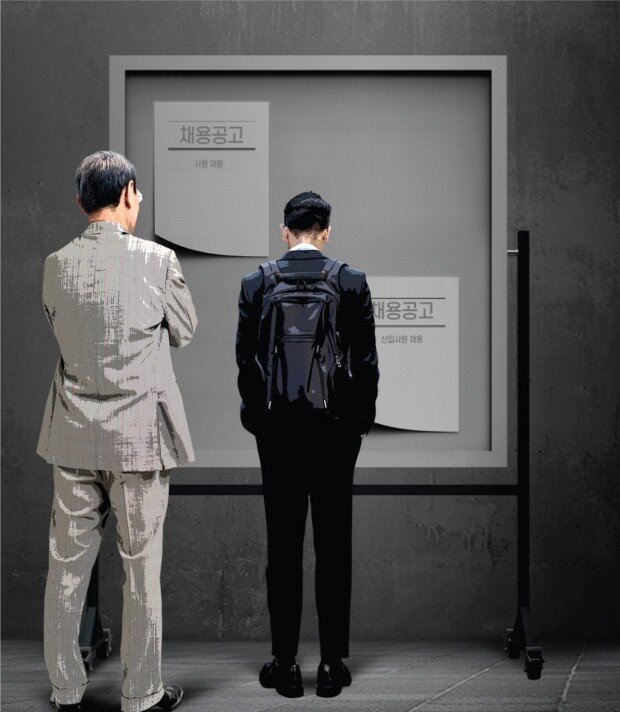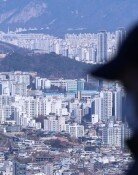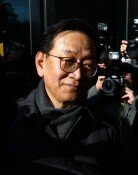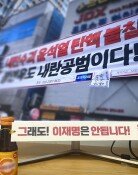‘Sad employment’ in aging Korea
‘Sad employment’ in aging Korea
Posted May. 18, 2024 07:48,
Updated May. 18, 2024 07:48

Lee (64) is a former professional soldier who now serves as a commercial manager in Gimpo City, Gyeonggi Province. Despite being eligible for his military pension, Lee chose to continue working. His reason? “I wanted to live in my hometown after retirement, engaging in hobbies,” Lee shared. “But the reality of significant health insurance premiums and various living expenses forced me to find a job again. Even this position is temporary, so I am constantly looking into other jobs every two years.” Lee's story is just one example of the growing trend of elderly employment in Korea.
The concept of a fixed 'retirement age' has become a thing of the past in Korea. The domestic employment landscape is witnessing a significant shift. The proportion of individuals aged 60 and above, both employed and unemployed, has reached its highest levels. While the number of employed individuals is increasing, a significant portion of available positions are being filled by older workers who have surpassed traditional retirement age. This trend is not without its consequences. There's a concerning decline in the number of young individuals (aged 19 to 29) who typically inject vitality into the job market, as well as those in their 40s who historically held pivotal roles. Some experts even suggest that the Korean economy is rapidly aging.
As per the 'April Employment Trends' released by Statistics Korea on Friday, the total number of employed individuals aged 15 and above last month stood at 28,693,000, marking a rise of 261,000 compared to last year. Notably, the surge in employment, which reached approximately 300,000 in January and February of this year, dipped to 173,000 in March, marking the lowest figure in 37 months, before rebounding to around 200,000 in April.
For 38 consecutive months, the number of employed individuals in Korea has been on the rise. However, a closer look reveals a notable trend. The proportion of workers aged 60 and above is increasing significantly. Breaking down the figures by age, the count of employed individuals aged 60 or older surged by 292,000 compared to the previous year, marking the most significant increase across all age cohorts. In contrast, there was a decline of 89,000 in the number of employed youth (aged 15 to 29), while the count of employed individuals in their 40s dropped by 90,000. This stark contrast in employment trends among different age groups is a clear indicator of the changing job market dynamics in Korea.
The economic activity participation rate among individuals aged 65 and older increased by 1.8% compared to the previous year. Conversely, the participation rate for those aged 20 to 29 decreased by 0.5%. This trend indicates a declining number of young individuals engaged in long-term employment, juxtaposed with a rising trend of older individuals re-entering the job market after leaving due to retirement age constraints.
Unemployment has surged, particularly among the elderly demographic. In April of this year, the total number of unemployed individuals increased by 81,000 compared to last year, marking the most substantial rise in three years and two months since February 2021, when it reached 201,000. This uptrend in unemployment has persisted for six consecutive months since November of the previous year. Notably, among the unemployed, individuals over 60 accounted for 39,000, signifying a notable increase of 32.1% from the previous year, while those in their 50s numbered 26,000, marking a rise of 20.8%.
"The uptick in employment among the elderly in Korea can be attributed to inadequate pension provisions,” Kim Yoon-tae, a sociology professor at Korea University, asserted. “In cases where augmenting the basic pension proves challenging, we should consider bolstering support by creating more public-sector employment opportunities."
세종=이호 number2@donga.com
Headline News
- Joint investigation headquarters asks Yoon to appear at the investigation office
- KDIC colonel: Cable ties and hoods to control NEC staff were prepared
- Results of real estate development diverged by accessibility to Gangnam
- New budget proposal reflecting Trump’s demand rejected
- Son Heung-min scores winning corner kick







